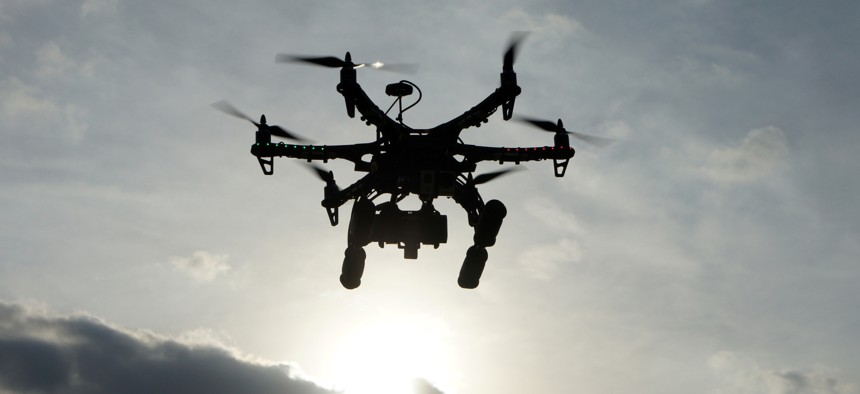Pushing the envelope on drones for indoor emergency response

Richard Newstead / Getty Images
Participants in NIST’s First Responder UAS Indoor Challenge will design, build and fly a cost-effective, easily flyable drone solution to help search and rescue teams gain better situational awareness prior to entering a building.
First responders can deploy drones to get eyes on wildfires, flood damage and crash scenes. But for emergencies inside dark or smoke-filled buildings, drones are limited by the lack of GPS, limited lighting and compromised building integrity.
To bridge this gap, the National Institute of Standards and Technology has launched the First Responder UAS Indoor Challenge. Competitors will design, build and fly a cost-effective, easily flyable drone solution to help search and rescue teams gain better situational awareness prior to entering a building.
The challenge is supported by NIST’s Public Safety Communications Research (PSCR) division and managed by Capital Consulting Corporation, in partnership with Kansas State University. Up to $685,000 will be awarded in prizes throughout three stages of the challenge. Prize recipients will be determined by a panel of judges, assisted by a team of subject matter experts.
“Most UAS utilized today rely heavily on GPS technology,” said Kurt Carraway, executive director of Kansas State University Applied Aviation Research Center. “Most of these systems are significantly degraded in indoor environments because of a lack of GPS signal. Our public safety partners indicate this is a challenge for many of their applications. We hope this challenge yields cost-effective, meaningful alternatives; this competition may improve public safety around the world.”
NIST’s drone challenges have helped accelerate advances for public safety, according to Dereck Orr, PSCR division chief. In 2018, PSCR’s challenge required drones to carry an LTE network device, lift up to 20 pounds and hover for as long as possible. Participants in the 2020 Endurance Challenge have extended flight times and payload capacity and increased transmission rates and distances.
“Our current Triple Challenge is also looking at ways to help in first responder missions by improving image detection, providing broadband communications in GPS-denied areas, and identifying UAS cybersecurity vulnerabilities,” Orr said. These prize challenges are having an impact across the U.S. and around the world for public safety.”
The competition opened on April 27, with multiple stages running through June 2023. for additional information about the challenge and to register, visit the challenge website.






